What did Julian Assange do?
WikiLeaks, founded by Julian Assange in 2006, has been a controversial figure in the global arena, significantly altering perceptions of transparency and security.
By releasing classified documents, WikiLeaks has sparked global debates and brought to light hidden information affecting international relations, politics, and warfare.
Table of Contents
Top 10 WikiLeaks exposés
1. The Gitmo Files
In April 2011, WikiLeaks published the Gitmo Files, revealing details about the Guantanamo Bay detention camp.
These documents exposed the identities, medical conditions, and the legal justifications for the detention of over 750 prisoners. The release raised questions about human rights and the legality of the methods used in the War on Terror.
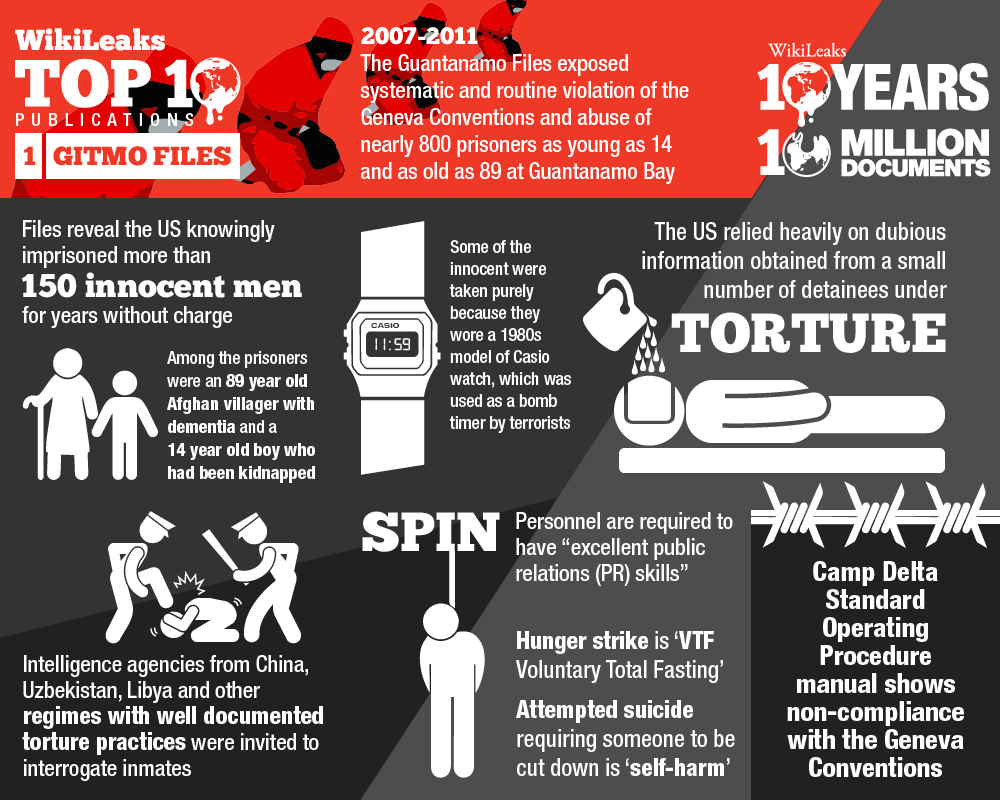
2. The Iraq and Afghanistan War Logs
The Iraq War Logs, released in October 2010, consisted of over 391,000 military logs from 2004 to 2009.
These logs highlighted numerous cases of abuse and torture by Iraqi police and forces, previously unreported civilian deaths, and the true scale of the conflict. This leak significantly altered public opinion on the Iraq War.
The Afghanistan War Logs consist of a collection of over 75,000 classified military documents that were released by WikiLeaks in 2010.
These documents provide a detailed account of the war in Afghanistan from 2004 to 2010.
This massive leak was one of the largest and most controversial disclosures of military documents in history, shedding light on various aspects of the conflict, including:
- Civilian Casualties: The documents revealed numerous instances of civilian casualties, many of which were previously unreported or underreported. This included details of deadly air strikes and incidents where civilians were killed at checkpoints or during operations conducted by coalition forces.
- Insurgent Attacks: The logs detailed the tactics and incidents involving insurgent groups, such as the Taliban. This included accounts of improvised explosive device (IED) attacks, ambushes, and direct engagements with coalition and Afghan government forces.
- Covert Operations: Some documents disclosed information about special forces operations, covert activities, and the involvement of the CIA in targeted killings and capturing high-value targets.
- Pakistani and Iranian Involvement: The logs suggested complicity and support from neighboring countries like Pakistan and Iran in aiding insurgent activities within Afghanistan. These allegations included reports of Pakistani intelligence (ISI) supporting the Taliban, which strained relations between the United States and Pakistan.
- Challenges in Afghan Security Forces: The documents highlighted the challenges and issues within the Afghan National Army and Police, including corruption, drug use, and ineffectiveness in combat situations.
- Task Force 373: Perhaps one of the more explosive revelations was the existence of Task Force 373, a secret U.S. Special Forces assassination unit that reportedly targeted high-value insurgents but also killed civilians in some operations.
The release of the Afghanistan War Logs had a profound impact on public perception of the ongoing war in Afghanistan.
It sparked debates over the ethical and legal implications of the leaked information, the conduct of troops on the ground, and the real situation of the war as opposed to official reports.
The disclosures were criticized by governments and military officials, who claimed they put lives at risk, but were lauded by advocates of transparency and anti-war activists as essential for understanding the true nature of the conflict.

3. Minton Report
WikiLeaks released the Minton Report in 2009, which detailed the hazardous waste dumping by a multinational company in Ivory Coast.
The report had been suppressed under a UK injunction, and its publication highlighted issues of corporate responsibility and environmental law.
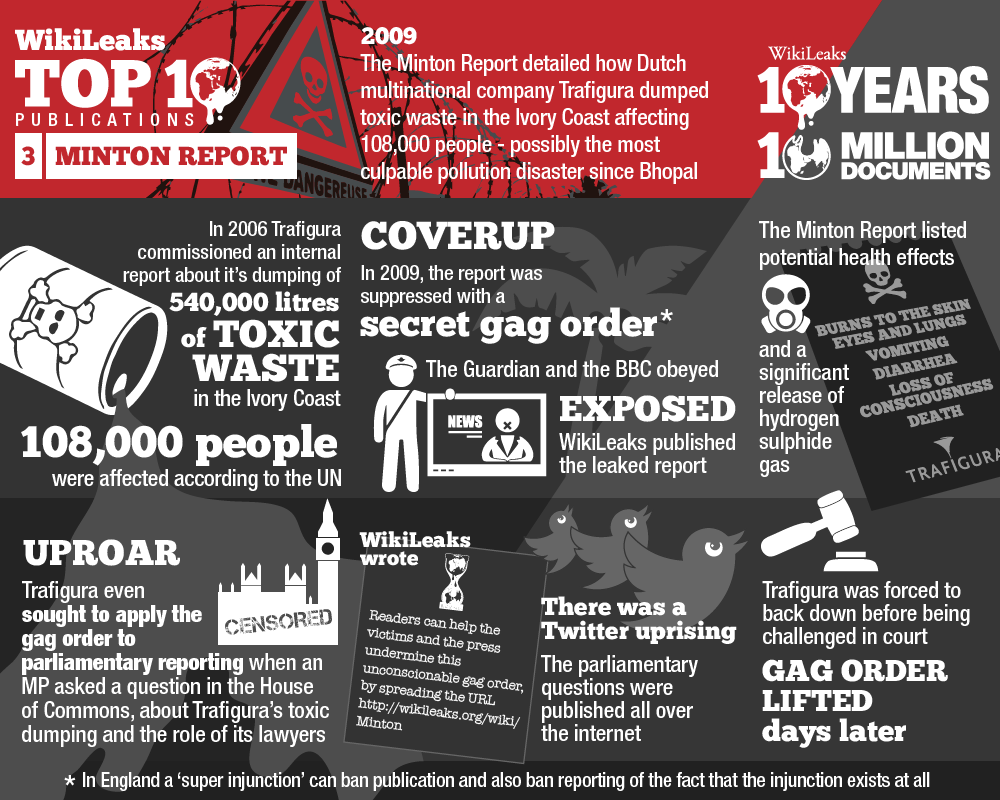
4. Collateral Murder
Perhaps the most visually shocking of WikiLeaks’ releases was the “Collateral Murder” footage in 2010.
It showed US Apache helicopters killing 12 people, including two Reuters journalists, in Baghdad. The video raised debates on the rules of engagement and the moral responsibilities of combat.
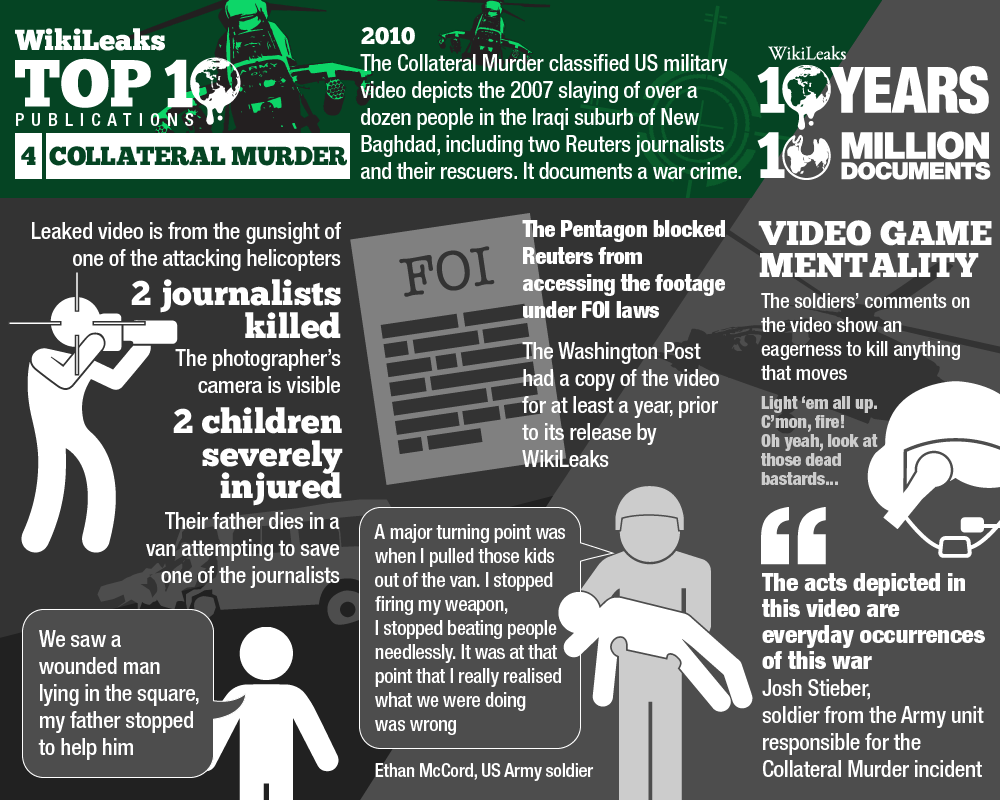
5. Cablegate
In November 2010, WikiLeaks began releasing over 250,000 US diplomatic cables, dubbed “Cablegate.”
These communications revealed frank assessments of foreign leaders and governments and exposed behind-the-scenes diplomatic dealings and espionage.
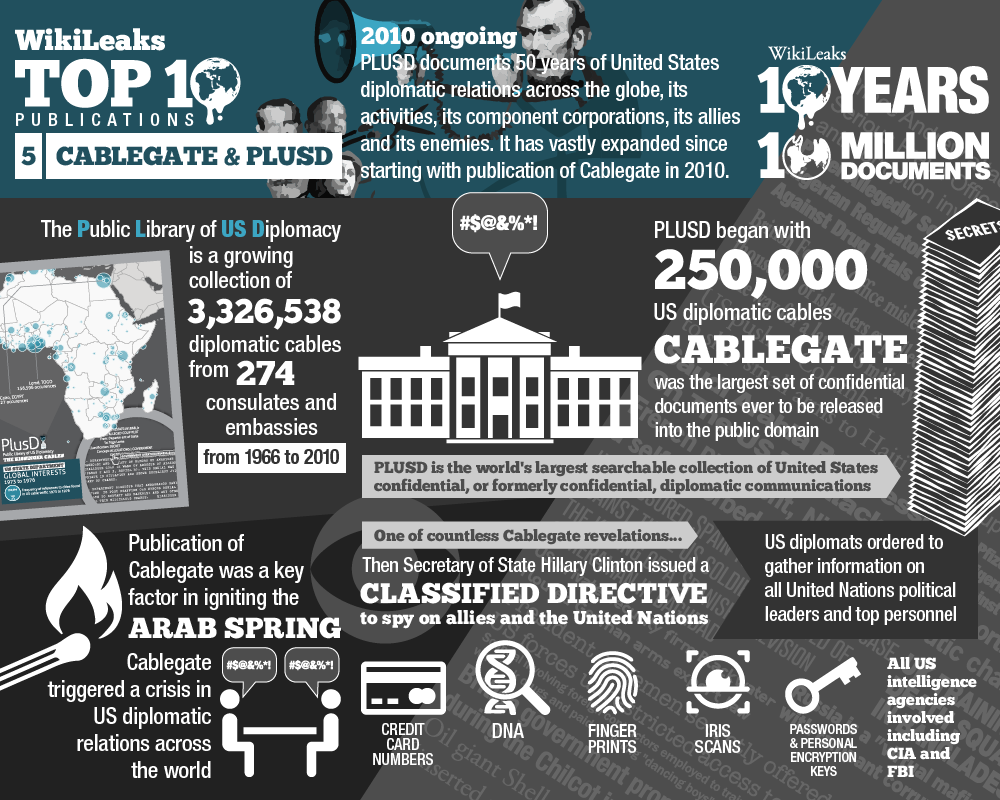
6. Syria Files
In 2012, WikiLeaks released over two million emails from Syrian political figures, ministries, and companies, providing insights into the Syrian government’s strategies during the early years of the civil war and how Western companies engaged with Syria, despite sanctions.
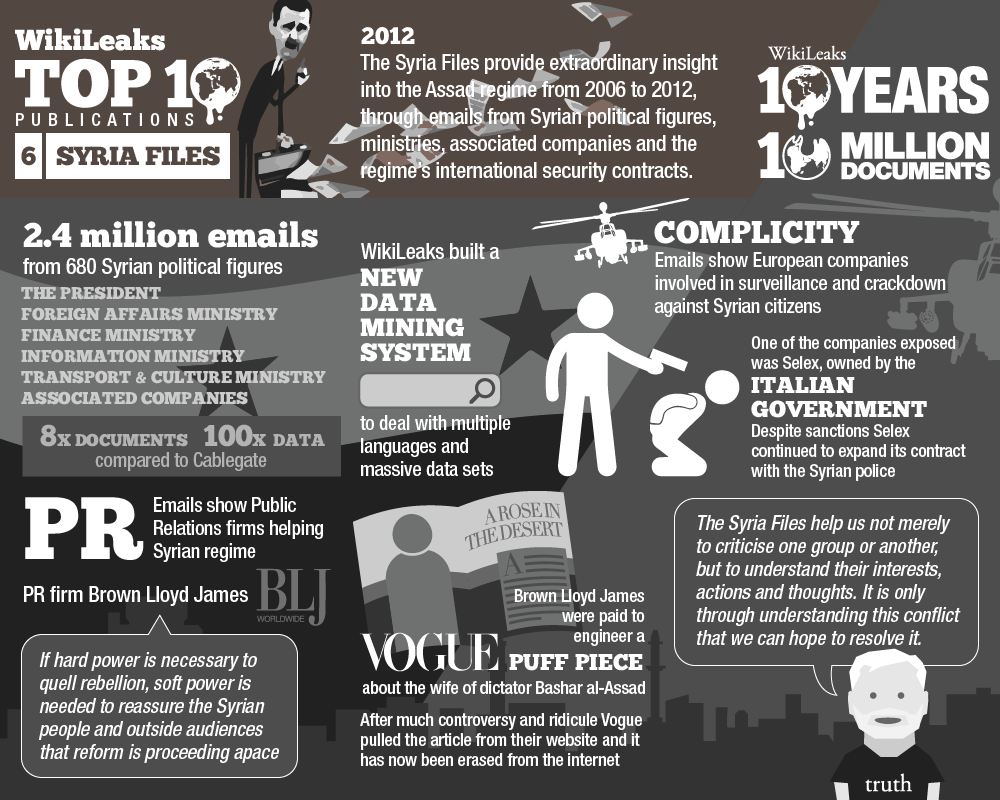
7. Global Intelligence Files
The 2012 release of the Global Intelligence Files exposed over five million emails from Stratfor, a global intelligence company.
The emails revealed the inner workings of a private intelligence firm and its dealings with government and corporate clients.
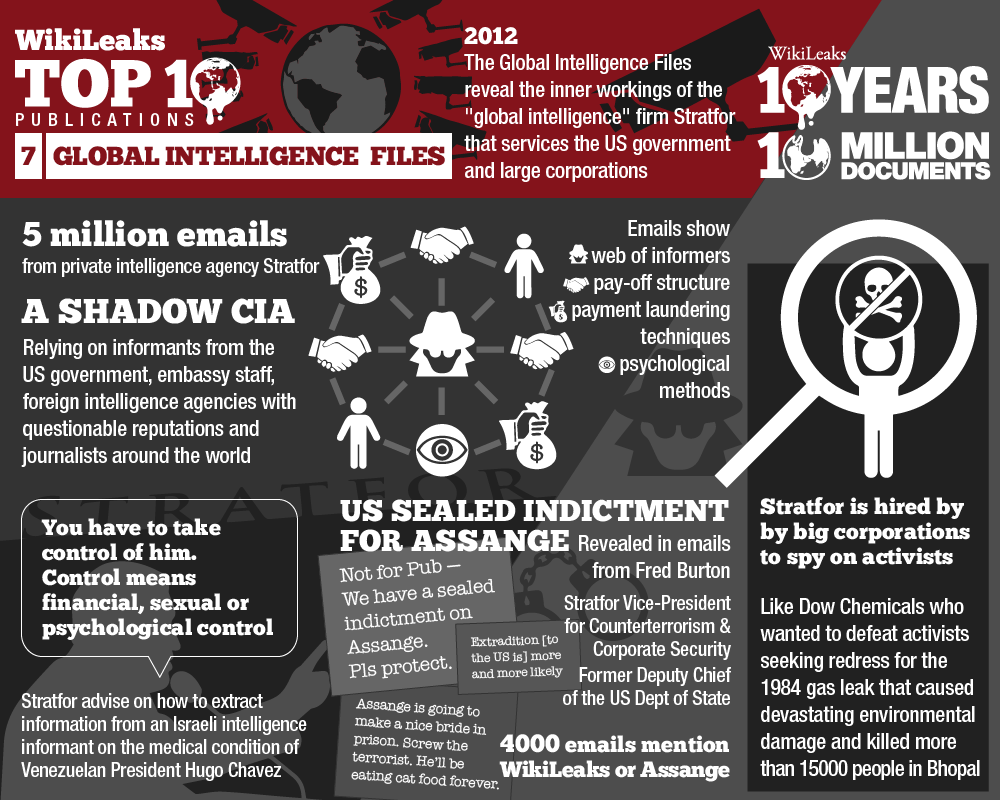
8. TTP, TTIP, & TISA
WikiLeaks’ publications of drafts from trade agreements like TTP, TTIP, and TISA provided the public with a rare glimpse into the negotiations and terms of complex international trade deals usually conducted behind closed doors, sparking widespread protests and debates on sovereignty and economic policy.
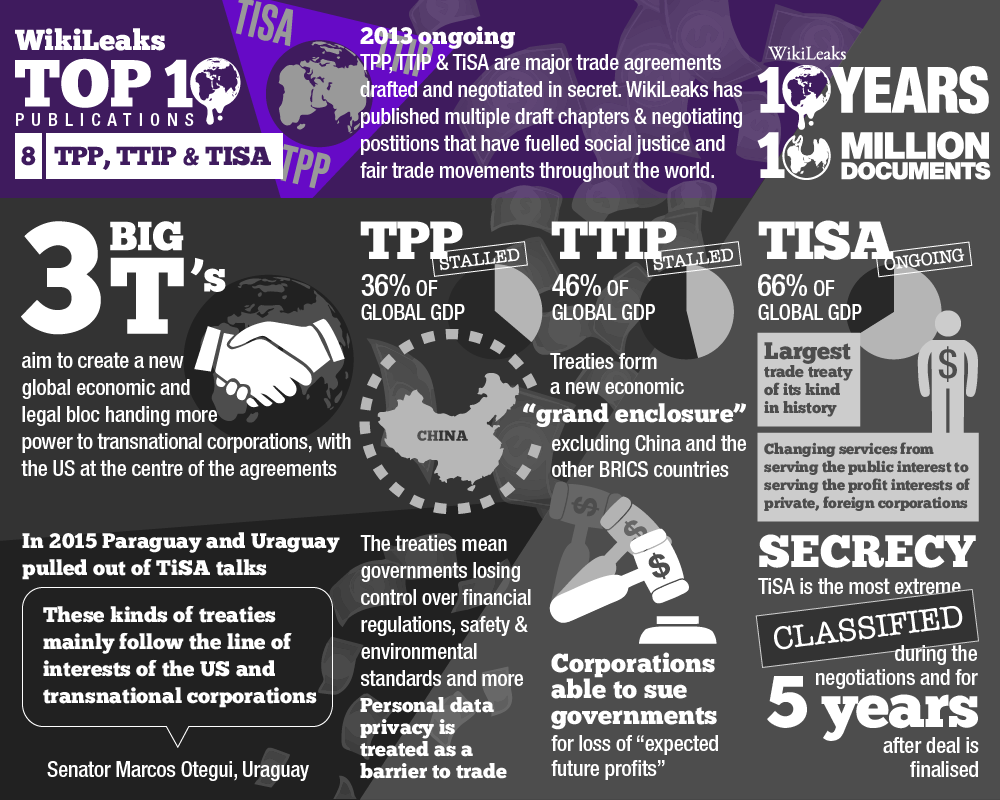
9. The NSA World Leaders Targets
In 2013, documents revealed that the NSA had spied on world leaders, including monitoring the mobile phone of German Chancellor Angela Merkel.
This led to significant diplomatic fallout and discussions about the extent of US surveillance.
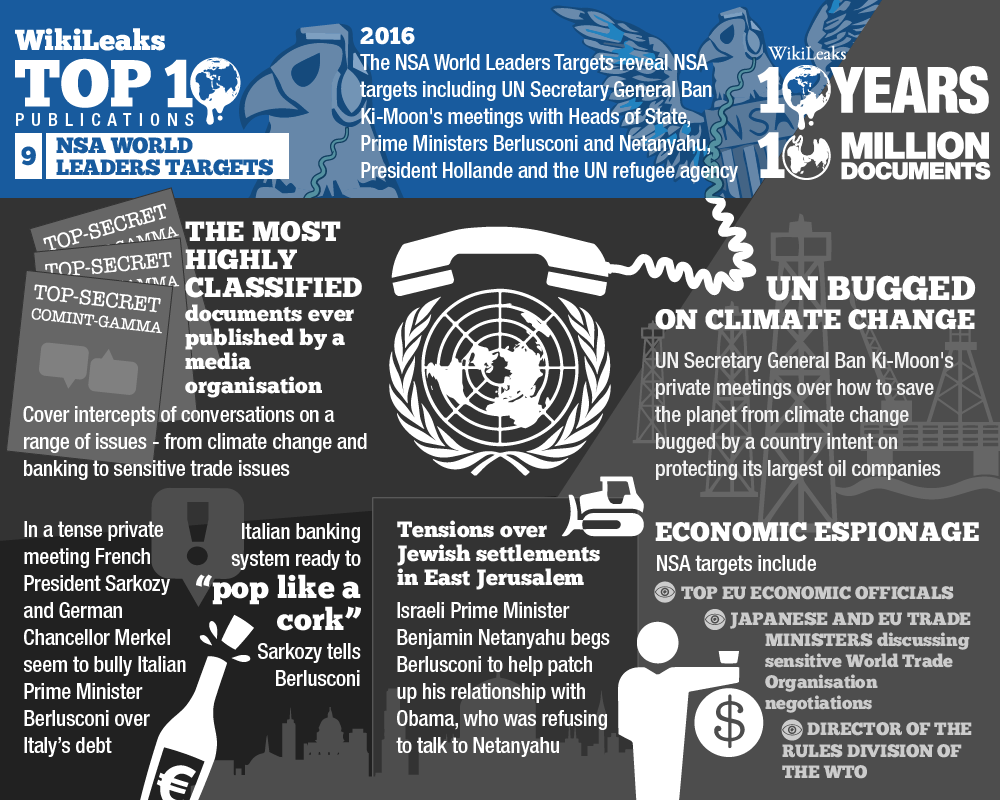
10. DNC Email Database
In 2016, WikiLeaks released emails from the Democratic National Committee, showing bias against presidential candidate Bernie Sanders and sparking a controversy that influenced the US presidential election.
This leak highlighted the power of such information in affecting electoral politics.
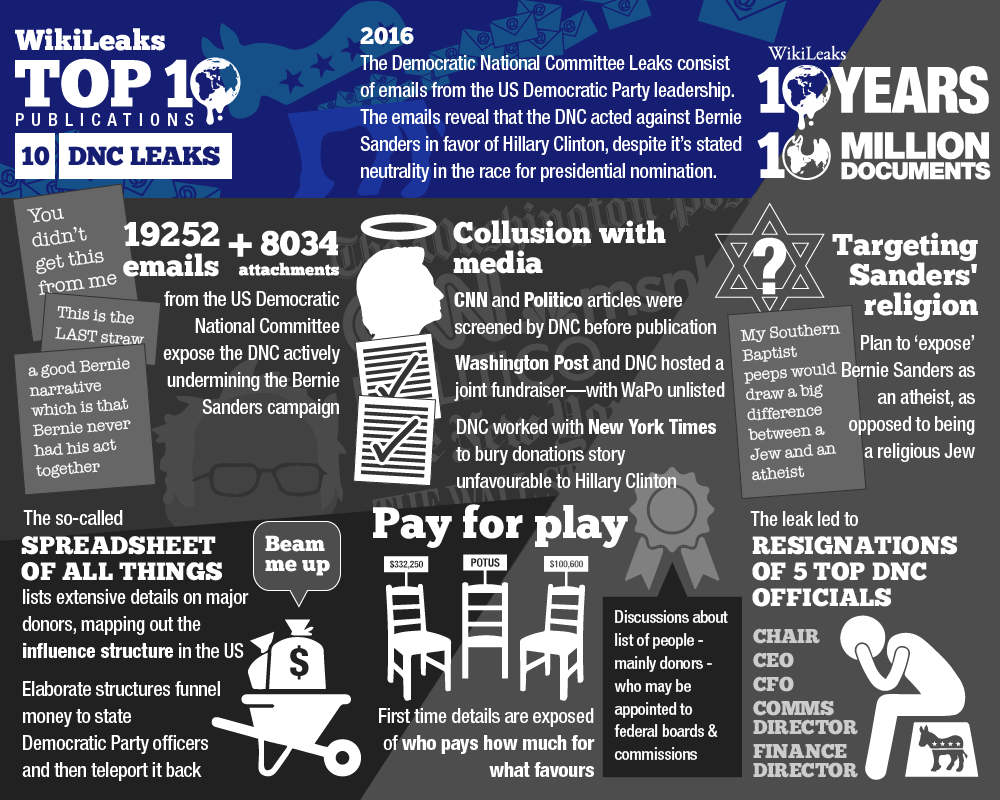
WikiLeaks has undeniably played a pivotal role in shaping modern history by pushing the boundaries of transparency and challenging global security norms.
While it has been hailed for promoting transparency, it has also been criticized for jeopardizing both individual privacy and national security.
Julian Assange Released
Julian Assange was released on June 24, 2024, after a significant legal development involving a plea deal with the United States, marking the end of a 14-year legal battle. Here’s a brief overview of the situation:
- Charges: Assange pleaded guilty to one charge of espionage, specifically related to his role in obtaining and publishing classified US military documents.
- Release: He was freed from a UK prison following a brief court hearing held in Saipan, a US territory, which facilitated his release.
- Sentence: Owing to the extensive time already served in detention, Assange was not sentenced to additional jail time.
- Current Status: Following his release, Assange has returned to Australia.
This resolution concludes a long and contentious legal saga that lasted over a decade, highlighting the divisive views on Assange’s actions.
His supporters celebrate him as a champion of free speech and transparency, crediting him with exposing governmental and corporate misconduct on a global scale.
Critics, however, contend that his actions compromised national security and put many lives at risk by recklessly publishing sensitive information.
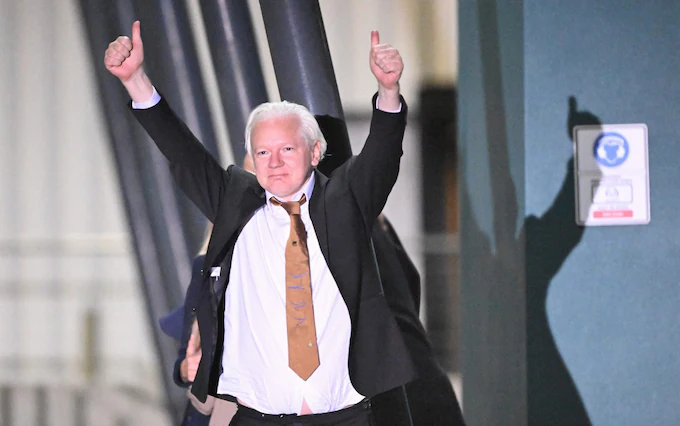
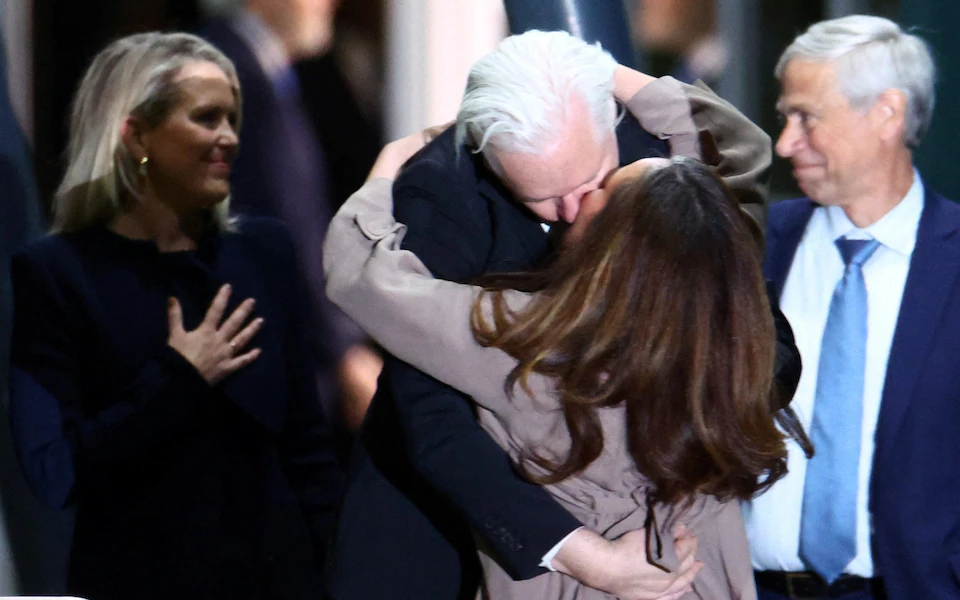
FAQs about Julian Assange
Who is Julian Assange?
Julian Assange is an Australian journalist, publisher, and founder of WikiLeaks, a platform known for publishing classified materials provided by anonymous sources.
What is WikiLeaks?
WikiLeaks is a non-profit organization that publishes confidential documents and images, aiming to bring important news and information to the public, especially content that exposes government and corporate misconduct.
Why was Julian Assange arrested?
Julian Assange was arrested in April 2019 in London for failing to surrender to the court in 2012, related to extradition proceedings initiated by Sweden over allegations of sexual offenses.
What are the major publications by WikiLeaks?
Some of the major publications by WikiLeaks include the Afghan and Iraq War logs, the US diplomatic cables (Cablegate), and the Democratic National Committee emails.
Has Julian Assange faced any charges in the United States?
es, Julian Assange did face charges in the United States. He was initially indicted in 2017 on a hacking charge related to his interactions with Chelsea Manning and WikiLeaks. In 2019, the charges were expanded to include 17 counts of espionage related to the Espionage Act. These charges carried a potentially much harsher sentence.
However, as of June 26, 2024, his legal situation is resolved. He plead guilty to a single, lesser charge in exchange for his freedom.
What is the significance of the Chelsea Manning case in relation to Julian Assange?
Chelsea Manning was a source for WikiLeaks and provided Assange with classified documents related to US national security, which were subsequently published, leading to significant legal and ethical debates.
How has Julian Assange’s work impacted global politics?
Assange’s work has led to numerous political repercussions, including diplomatic tensions, reforms in information handling, and debates over freedom of the press and national security.
Where is Julian Assange from?
Julian Assange was born in Townsville, Queensland, Australia.
What awards has Julian Assange won for his work with WikiLeaks?
Julian Assange has received several awards, including the Economist Index on Censorship Award and the Sydney Peace Foundation Gold Medal.
What is the current status of Julian Assange?
As of the latest updates, Julian Assange is currently a free man in Australia. On June 25th, 2024, he pleaded guilty to a single charge related to obtaining and publishing classified U.S. military information as part of a deal with U.S. prosecutors. This plea deal secured his release after years in prison and legal battles concerning extradition. He arrived in Australia on June 25th.
When was Julian Assange released ?
Julian Assange was released on June 24, 2024.


